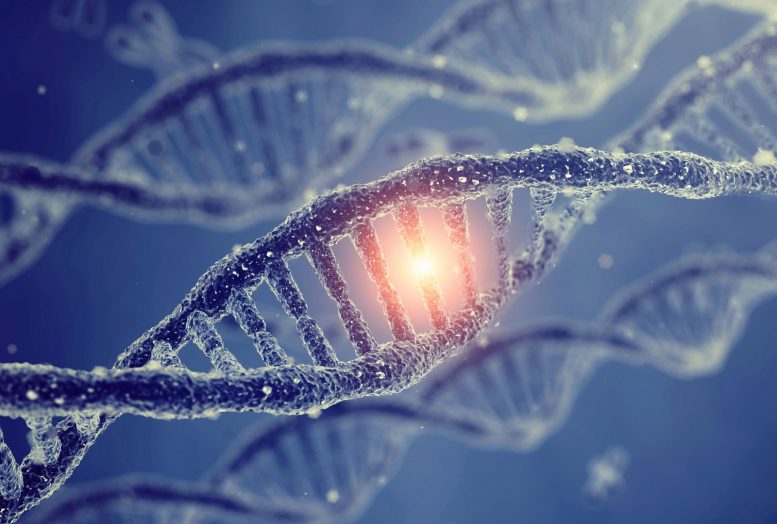
Researchers found a genetic variant, or mutation, in the MET receptor tyrosine kinase gene has a greater impact on brain connectivity in children with ASD, affecting the network involved in social behavior, including recognizing facial emotions.
A new study from UCLA scientists reveals how a mutation in the MET receptor tyrosine kinase gene affects kids with autism spectrum disorders, showing for the first time that the “C” variant, which reduces MET protein expression, specifically impacts the network of connections among different areas of the brain involved in social behavior, including recognizing emotions shown on people’s faces.
Over the past decade, researchers have made great strides in identifying genes that lead to an increased risk of autism spectrum disorders (ASD), which result in a continuum of social deficits, communication difficulties, and cognitive delays. But it’s still critical to determine how exactly these genetic risk factors impact the brain’s structure and function so that better treatments and interventions can be developed.
This led researchers at the University of California, Los Angeles (UCLA) to look more closely at one particular culprit that’s known to cause a susceptibility to ASD — a genetic variant, or mutation, in the MET receptor tyrosine kinase gene, commonly known simply as MET.
And what they found was striking: For the first time, the researchers showed that the so-called “C” variant, which reduces MET protein expression, specifically impacts the network of connections among different areas of the brain involved in social behavior, including recognizing emotions shown on people’s faces. While this gene variation is commonly found in the brains of both health individuals and those with ASD, the study showed that the gene has a bigger impact on brain connectivity in children with ASD.
The findings appear in the current online edition of the journal Neuron.
Senior author Mirella Dapretto, a professor of psychiatry at the Semel Institute of Neuroscience and Human Behavior at UCLA; first author Jeff Rudie, a graduate student in Dapretto’s lab; and Pat Levitt, the Provost Professor of Neuroscience, Psychiatry, Psychology and Pharmacy at the University of Southern California, who discovered MET’s association with ASD, used three different types of magnetic resonance imaging (MRI) to determine how the MET risk factor impacts brain structure and function.
Their findings provide new insight into understanding ASD heterogeneity — the considerable individual differences in how ASD symptoms present — which has challenged the field in developing more effective diagnostic tools and biologically based interventions for all affected children. Eventually, genetic information may be useful in identifying subgroups of individuals with ASD who may better respond to different types of treatment.
“Although researchers have begun to identify a variety of autism risk genes, the exact mechanisms by which genetic variation affects cellular pathways, brain networks and ultimately behavior is largely unknown,” Rudie said. “We wanted to know how this risk allele may affect brain circuitry, predispose an individual to ASD and exacerbate these social deficits.”
Other work has shown that the brains of individuals with autism have weak long-range connections yet possess excessive short-range connections when compared with healthy individuals. These connectivity problems could underlie the characteristic social problems of the disorder, said Rudie.
“Complex social behavior is known to rely on the rapid and dynamic integration of many different brain regions,” he said.
“We wanted to know whether variations in the MET gene affected these connectivity patterns,” Dapretto said.
The researchers used three magnetic resonance imaging methods — functional MRI, resting-state functional MRI and diffusion tensor MRI — to measure the structure and function of connections in the brains of 75 healthy children and 87 adolescents with ASD.
Across both groups, children and adolescents carrying the risk allele were found to display atypical activity in the brain as they observed a range of emotional faces (angry, fearful, happy, sad and neutral). This included hyperactivation of the amygdala, a structure in the brain that plays a key role in processing emotional information.
The researchers also found that the “C” variant disrupted both the functional and structural connectivity of brain networks involved in social behavior and which had been previously implicated in autism. The risk allele affected brain networks in both children who were developing typically and children with ASD — but importantly, it was shown to have a stronger impact in individuals with ASD.
“What’s interesting about this study is that we examined a mutation that’s quite common in both healthy children and children with ASD,” said Dapretto, who is also a member of UCLA’s Center for Autism Research and Treatment. “We were able to show that a common mutation can play a significant role in neuropsychiatric disorders in a field where rare mutations, affecting a small proportion of individuals, have typically received the most attention.”
In addition, she said, the findings have widespread implications for the field of neuroimaging, in that alterations in brain structure and function in clinical populations may in part reflect genetic vulnerability.
“Taken together, our findings break new ground in gene–brain–behavior pathways underlying autism spectrum disorders and brain development more broadly,” Rudie said.
Reference: “Autism-Associated Promoter Variant in MET Impacts Functional and Structural Brain Networks” by Jeffrey D. Rudie, Leanna M. Hernandez, Jesse A. Brown, Devora Beck-Pancer, Natalie L. Colich, Philip Gorrindo, Paul M. Thompson, Daniel H. Geschwind, Susan Y. Bookheimer, Pat Levitt and Mirella Dapretto, 6 September 2012, Neuron.
DOI: 10.1016/j.neuron.2012.07.010
Other authors of the study included Leanna M. Hernandez, Jesse A. Brown, Devora Beck-Pancer, Natalie L. Colich, Paul M. Thompson, Daniel H. Geschwind and Susan Y. Bookheimer, all of UCLA, and Philip Gorrindo of USC.
The work was supported by the NICHD (grant P50 HD055784), the NIMH (grants R01 HD06528001, NIMH 1R01 MH080759, T32 GM008044 and T32 MH073526-05), the NIH (grants RR12169, RR13642 and RR00865) and Autism Speaks. The authors report no conflict of interest.


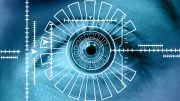
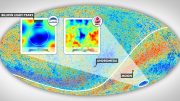


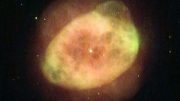
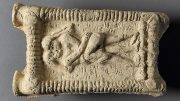
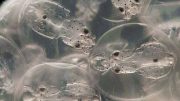
And then whose stupid idea was it to mask people during the covid days? Talk about PURE TORTURE to people on the spectrum. Mind games for sure.. Shameful. Just, “following the science,” right? Science was WRONG…. wrong when it came to keeping autistic people from being able to read peoples faces, which were covered up.. SHAMEFUL!!! CAN YOU SAY SENSORY OVERLOAD??????? OR WAS THAT THE PLAN ALL ALONG????